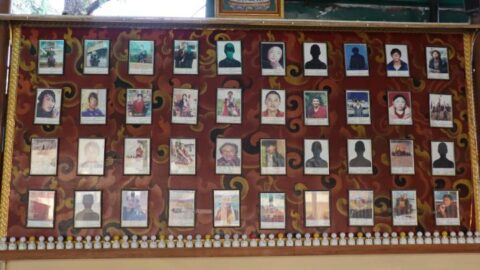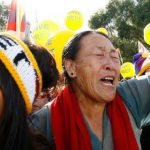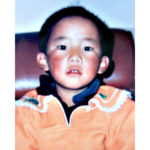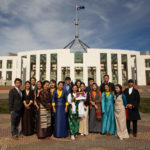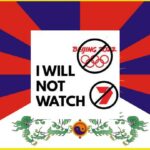Tibetan Independence Rising: An Interview with Tibetan Youth Congress’ Sonam Tsering
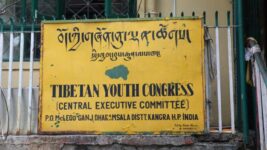
Tashi Phuntsok, an 81-year-old Tibetan man self-immolated out the front of the Chinese police station located next to Kirti Monastery in the Tibetan county of Ngaba on 27 March. Also known as Taphun, Phuntsok did this in protest of China’s ongoing oppressive occupation of Tibet.
The region where Kirti Monastery is located is currently considered part of the Chinese province of Sichuan.
Taphun is the second Tibetan to have self-immolated this year in protest of the over six decades of Chinese occupation of their homelands. On 25 February, Tsewang Norbu, a 25-year-old popular singer, burnt himself to death in the Tibetan capital of Lhasa outside the Potala Palace.
Since 2009, a total of 159 Tibetans have self-immolated inside of Tibet in an act of resistance to Chinese rule. And ten have made the same ultimate sacrifice in other countries, in an effort to raise global awareness to the intense repressions Tibetans are forced to live under.
The Chinese Communist Party (CCP) began its invasion of the Tibetan nation in 1950, spouting justifications around liberating the people. By 1959, Beijing has consolidated its rule, and has since unleashed a systematic program of cultural genocide and ever-increasing repressive programs.
Erasing Tibetan identity
Freedom House now ranks Tibet the least free country alongside Syria. From 2011 to 2016, whilst under the administration of CCP secretary Chen Quanguo, the area of Tibet now designated as the Tibetan Autonomous Region became one of the most surveilled places on Earth.
Within Tibetan urban areas extensive CCTV surveillance systems and grid-style networks of “convenience police stations” were rolled out. Whilst, more recently, in rural areas small teams of Chinese officials have been deployed to live within village communities to monitor locals.
But even though Chen has since moved on, the repressions continue. A 2021 Tibet Action Institute report outlines that 78 percent of Tibetan children are now being sent to Chinese assimilationist-style boarding schools similar to those that once operated in nations like Australia and Canada.
The nation of Tibet
Since 1959, tens of thousands of Tibetans have fled their homelands, most often making the arduous journey across the Himalayas on foot. And Sonam Tsering is one of them. In 2003, the 11-year-old made the weeks-long journey to Nepal and onto the town of McLeod Ganj in India.
Today, Tsering is the general secretary of the Tibetan Youth Congress. Formed in 1970, the TYC is the largest Tibetan nongovernment organisation. And it’s fighting for the complete independence of Tibet to fulfil the aspirations of those continuing to live in their homelands.
Often referred to as Dharamshala, McLeod Ganj is also the home to the Central Tibetan Administration, formerly the Tibetan Government-in-Exile, which is fighting for meaningful Tibetan autonomy whilst remaining part of China, which was an approach it adopted in 1998.
Sydney Criminal Lawyers spoke to TYC general secretary Sonam Tsering about the reason why self-immolation is such a prominent form of protest amongst Tibetans, the repressions his people are suffering in their homelands, and why the prospect of a free Tibet is only growing.
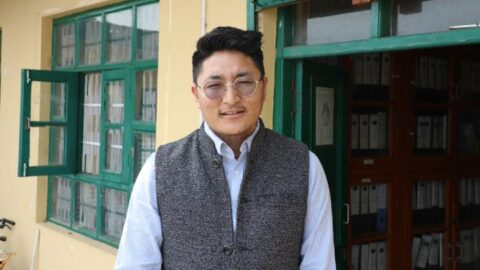
Two Tibetans have recently self-immolated in protest against the Chinese occupation of their nation. On 4 April, the Tibetan Youth Council staged a vigil in the main square of the north Indian town of McLeod Ganj in remembrance of 81-year-old Taphun, who self-immolated in March.
Sonam, how do you consider the actions of these two men in taking their own lives in protest? And why has Chinese occupation driven them to this extreme?
Five major Tibetan NGOs based in Dharamshala organised a candlelight vigil for martyr Taphun, an 81-year-old Tibetan who burnt himself in Tibet on 27 March.
Before that in February, a young talented Tibetan man, a singer, burnt himself in front of the Potala Palace, an iconic place, to protest against oppressive Chinese policies.
Both of them are from different age groups, which means that Tibetans, both old and young, are suffering under Chinese occupation. Everyone is against ongoing Chinese rule.
Both of them were also from different regions: one was from Amdo, and the other was from central Lhasa.
So, this means that Chinese authorities continue to implement their hardline policies throughout the three traditional regions of Tibet.
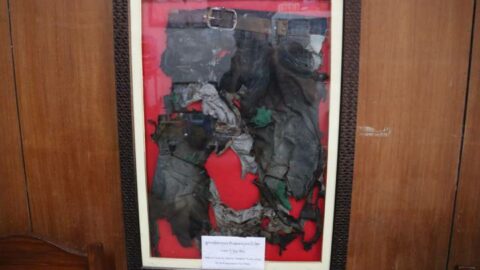
Including Taphun and Tsewang, 159 Tibetans have self-immolated since 2009 as acts of resistance to Chinese rule.
Of course, this isn’t the only form of protest Tibetans take. Notably, there were huge uprisings in Tibet in 1959, 1987 and 2008. The images that emerged from the 2008 protests during the Beijing Olympics were reminiscent of the types of demonstrations seen in the West.
But for many westerners, the concept of self-immolation as a form of protest is difficult to comprehend.
Can you speak on why so many Tibetans have taken this ultimate act of protest, and what it implies as an act of resistance?
Since 1959, when China began its illegal occupation, more than one million Tibetans have been murdered and more than 6,000 monasteries have been destroyed to ashes.
And as a result, many demonstrations have taken place over this time to protest against the Chinese hardline policies in Tibet.
Since 2009, 159 Tibetans have taken the supreme sacrifice and burnt themselves to protest against the severe Chinese Communist rule. All of these people have been calling for the return of His Holiness the 14th Dalai Lama to Tibet and for freedom for Tibet.
If you look at the slogans those protesting are raising, many of them say that the suffering Tibetans are undergoing without their human rights is much worse than the suffering that they will undergo when they set themselves on fire.
So, this is the situation inside Tibet. They have no other options than burning themselves. If they do regular demonstrations, they are put into prison immediately and then have to go through much inhumane treatment and torture.
They don’t want to suffer those kinds of things. But they want to let the world see what is happening inside Tibet. So, finally, they have to resort to these kinds of actions.
This is the spirit of the Tibetans inside Tibet, and it will continue to live on until the light of freedom shines in the land of snow.
There has been a lot of attention on the Chinese repression of the Uyghur people in their homelands over the last five years.
The Chinese official who implemented the heightened repressions in Xinjiang, CCP secretary Chen Quanguo, first applied much of these authoritarian practices when he was in charge of Tibet for the five years ending in 2016.
So, what is life like for the six million Tibetans living in their homelands today?
The human rights situation inside Tibet continues to deteriorate year-by-year. Since Xi Jinping came to power, more and more hardline policies have been implemented inside Tibet, and the attacks upon Tibetan identity and culture have escalated since Xi came to power.
The border security was tightened so that Tibetans cannot go to India, even for pilgrimage reasons.
If Tibetans want to go from one region to another inside Tibet, they have to go through long processes to get a passport to go from one part to another.
So, the situation is critical. If you communicate with outside Tibetans, you will be harshly punished. Your entire family and the entire village have to face the consequences of harsh and brutal punishment.
In terms of language, these days according to a Tibet Action Institute report, more than 800,000 Tibetan kids have been put in colonial boarding schools, which are directly targeting Tibetan culture.
These kids have no access to their culture. They have only one Tibetan language class, while all other subjects are taught in Mandarin. And even during school vacations, the children are not allowed to attend religious ceremonies or rituals.
This all shows how China is trying to wipe out the very identity of Tibet.
Many singers and writers are being targeted for expressing what they think is lawful. One singer from Driru County named Lhundrub Drakpa sang a song called Black Hat, which is not that politically sensitive, but he was imprisoned for six years for singing this one song.
Likewise, there are many other writers and artists who have been imprisoned for many years just for expressing what they feel is lawful. This is how critical the situation inside Tibet currently is.
Singers are being imprisoned for singing songs in praise of His Holiness the 14th Dalai Lama, but their songs can never be buried behind the curtains of communist censorship.
And because of this, we will sing their songs and continue to make the world understand their aspirations.
Beijing began its occupation of Tibet in 1950, solidifying its full control in 1959.
But in terms of the nomadic Tibetan people who’d been living a sustainable lifestyle for centuries across the plateau, the CCP turned its focus on them beginning in the 1990s.
What has this meant for the Tibetan nomads? And what was the CCP’s purpose of dismantling their way of life?
The major resettlement goals stated by the CCP are environmental protection of degraded grassland, on the one hand, and improvement of the socioeconomic situation of Tibetan pastoralist households, on the other.
Tibetan nomads have been depending on the same livelihood for thousands of years and played a major role in preserving and protecting the Tibetan plateau in the traditional way.
But the Chinese tore them away from their livelihoods and forced them to resettle in small concrete settlements, where they get very little support, and are left to face poverty and unemployment.
Once the nomads are removed from their lands, the areas become open to be exploited by Chinese companies, which, in fact, is destroying the sacred lands of the Tibetans. And these companies are smuggling out the Tibetan-rich minerals to China.
Deforestation, damming and mining activities are taking place all over the Tibetan plateau, which has negatively impacted climate change in the region.
The Tibetan Youth Congress was established in 1970. Today, it has over 35,000 members across 87 branches in 13 countries around the globe.
While all Tibetan authorities oppose the oppressive rule of the CCP at present, there are varying positions on the way forward for Tibetans.
The Central Tibetan Administration advocates the middle way approach, where Tibet remains a part of China, while Tibetans have true autonomy.
But TYC continues to call for complete independence. Can you speak on why the restoration of the nation of Tibet is the only way forward?
The restoration of Tibetan independence is our right. And we can find no other option to protect and preserve our culture, under CCP rule.
If you look at the Tibetan Autonomous Region, which they say has autonomy, it actually has less autonomy than the rest of the Tibetan regions, which are today a part of other Chinese provinces.
We are seeing more and more countries begin to understand the Chinese expansionist policies, and after the coronavirus outbreak, the international community started to look into China more cautiously.
This could be seen during the Beijing Winter Olympics, when more than 18 countries chose not to attend the opening ceremony.
The Central Tibetan Administration complex in McLeod Ganj includes a parliament-in-exile and all forms of government departments.
Visiting it conveys an understanding that despite 60-odd years of occupation, the restoration of Tibetan self-determination is a prospect that’s only growing stronger.
In your opinion, why is this conviction only increasing, especially at a time when China is rising in importance on the international stage? And how do you conceive an independent Tibet is going to come into being?
With the imposition of the Security Law in Hong Kong, the outbreak of the coronavirus and the CCP position in controlling their own people, more and more outsiders – both Tibetans and non-Tibetans – are beginning to understand that Chinese authoritarian policies are undermining human rights.
The Chinese government is not following what is set out in its constitution. In fact, everything it does is in contrast to it.
Human rights defenders and activists are being detained without trial. We’ve seen how China violated and breached the Sino-British Joint Declaration by the imposition of the Security Law in Hong Kong.
And we have seen how China time and time again, tries to infiltrate onto Indian soil with its expansionist policy.
Therefore, many Tibetans and non-Tibetans are beginning to lose their trust in China to implement what is written in its own constitution.
And due to all of this, there is more and more hope that support will come from the international community for Tibetan independence, and this is why more and more people are seeing the growing prospect for a free Tibet.
